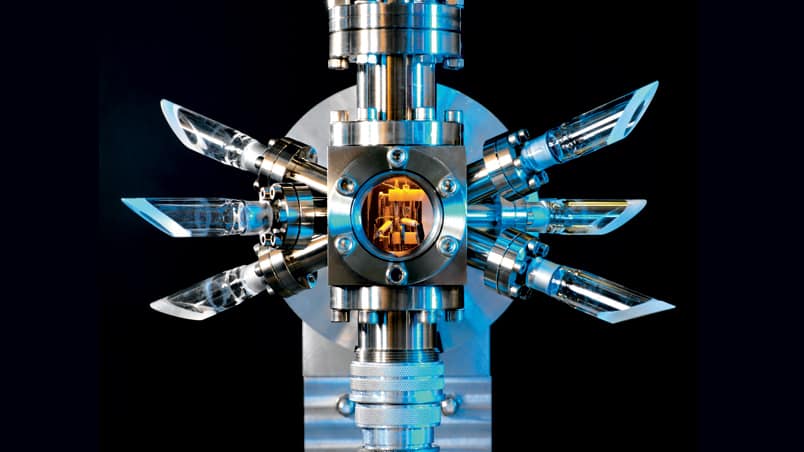The advent of atomic clocks has significantly transformed the precision with which time can be measured, yielding improvements that reach into the realm of femtoseconds. As the necessity for accuracy has escalated in various scientific fields—from global positioning systems to quantum computing—so too has the need to interrogate the influence of environmental factors on these sophisticated devices. Of particular intrigue is the impact of extreme thermal conditions on the operational integrity and reliability of atomic clocks. This discourse elucidates the complex interplay between atomic clock functionality and temperature fluctuations, contextualizing the implications for both fundamental research and applied technologies.
Atomic clocks operate on the principles of quantum mechanics, specifically utilizing the resonant frequencies of atoms as the basis for timekeeping. The most prevalent types of atomic clocks employ cesium or rubidium atoms, which oscillate at incredibly consistent frequencies when exposed to microwave radiation. The definition of the second, as it stands today, originates from the cesium atomic clock, which defines one second as the duration of 9,192,631,770 cycles of radiation corresponding to the transition between two hyperfine levels of the ground state of a cesium-133 atom. However, this definition is inextricably linked to the stability and predictability of the atomic transitions, which can be influenced by temperature.
At elevated temperatures, the behavior of atoms within the clock can become increasingly erratic. The Doppler effect, a phenomenon resulting from the motion of atoms at higher thermal energies, can lead to spectral broadening. This is particularly pronounced in environments where kinetic energy influences the atomic velocities. As velocity increases with temperature, the apparent frequency of the atomic transitions shifts, thereby introducing a bias into timekeeping. Researchers have increasingly focused on engineering solutions to mitigate such discrepancies, exploring temperature regulation techniques to sustain atomic clocks within closely controlled thermal environments.
Conversely, at extreme cold temperatures, the behavior of atoms undergoes another transformation. Ultra-cold atomic ensembles, which are temperatures near absolute zero (0 Kelvin), exhibit remarkably coherent quantum behavior. These conditions are utilized in optical lattice clocks, a recent advancement in atomic clock technology, where atoms are manipulated using laser light. The resulting quantum states provide unprecedented stability, surpassing traditional atomic clocks in accuracy. Yet, maintaining the requisite cold can pose technological challenges. Advanced cryogenic techniques are necessary to achieve and sustain these environments, further complicating the deployment of such devices in real-world applications.
The dual nature of thermal effects—both destructive at high temperatures and beneficial at low temperatures—illustrates a paradox inherent in atomic clock technology. This dichotomy compels scientists to consider the operational contexts in which atomic clocks are deployed. For instance, in space exploration, where temperatures can fluctuate dramatically, atomic clocks must be engineered to withstand extreme variations without compromising accuracy or functionality. Such considerations have spurred innovations in thermal insulation and active thermal control systems.
As we explore the impact of thermal environments, it is imperative to acknowledge the role of advanced materials science in the enhancement of atomic clock performance. The development of temperature-stable materials has opened new avenues for creating robust, reliable atomic clocks capable of functioning in less-than-ideal conditions. Investigation into materials with low thermal expansion coefficients ensures that the physical structure of the clock remains stable even as temperatures fluctuate. These advancements are not merely theoretical; they have been substantiated through rigorous experimental validation, elucidating pathways to the practical implementation of more resilient timekeeping devices.
Moreover, interdisciplinary collaboration between physicists, engineers, and material scientists is crucial in advancing atomic clock technology. This synergy fosters innovation, ensuring that advancements in one field can translate into improvements in another. For example, the integration of sophisticated electronic systems, such as digital signal processors, allows for real-time adjustments to the clock’s operational parameters in response to thermal variations. Such adaptive technologies enhance the robustness of atomic clocks, enabling them to provide consistent time measurements across diverse environments.
The intersection of atomic clock technology and temperature sensitivity harbors implications that extend beyond mere timekeeping. In fields such as telecommunications, global navigation, and fundamental physics, atomic clocks serve as pivotal components that underpin the functionality of countless systems. As we edge closer to realizing the potential of next-generation atomic clocks, the ability to maintain accurate timekeeping in varying thermal conditions will be paramount. With climate effects, even modest thermal variations can result in significant uncertainties; thus, continuous research into the thermal dynamics is not simply an academic pursuit, but a pressing necessity.
In conclusion, the exploration of thermal impacts on atomic clocks epitomizes the complexities of modern physics. The meticulous engineering required to redefine the limits of time measurement amidst contrasting thermal states underscores the rapidly evolving landscape of atomic clock technology. The continual advancement of methodologies that reconcile these thermal challenges will ensure that atomic clocks remain at the forefront of precision timekeeping, propelling us into a future where the very nature of time can be finely calibrated and understood. As such, the development of atomic clocks in the context of thermal extremes is not just an engineering achievement, but a crucial dialogue with the underlying principles that govern our understanding of time itself.












